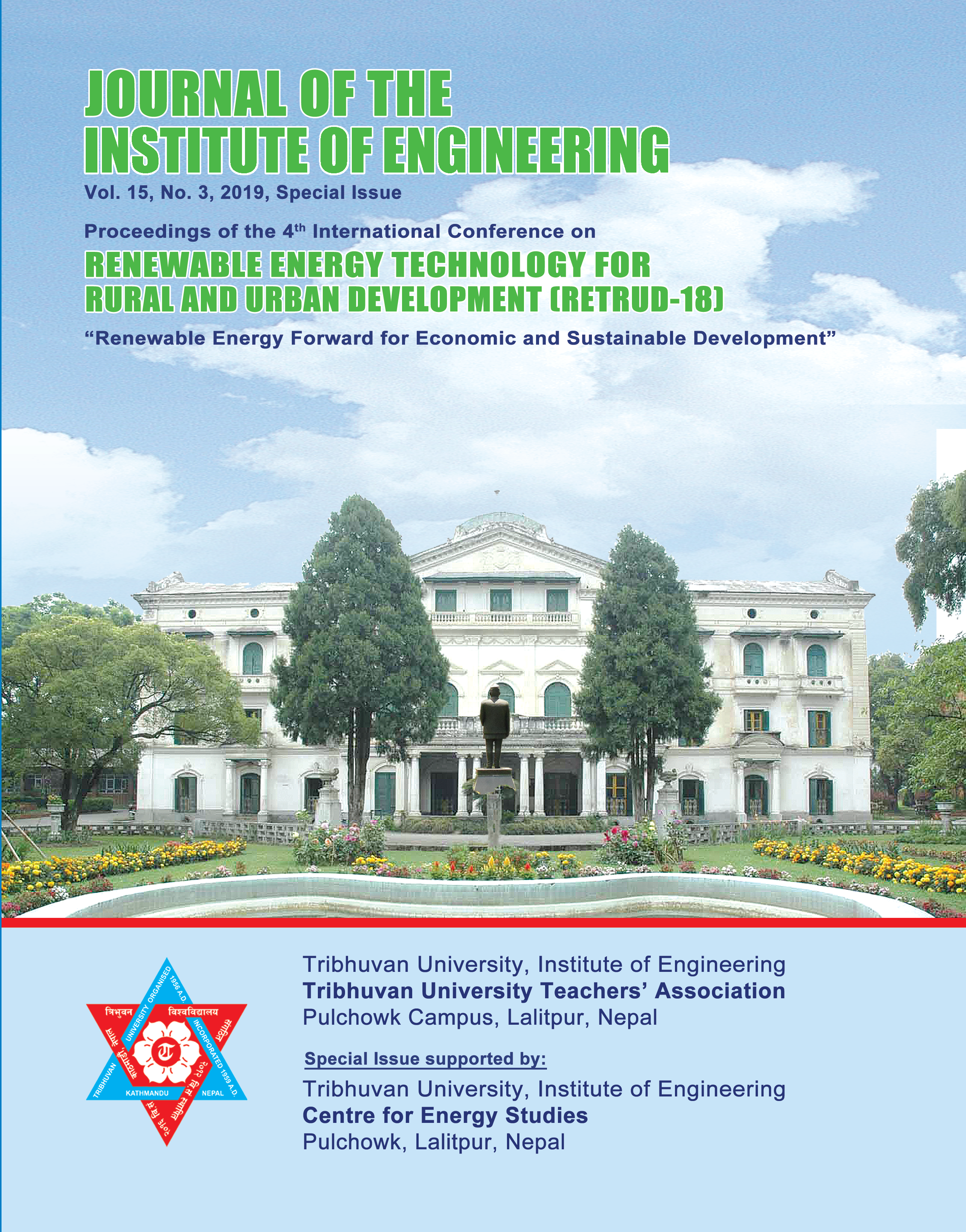Comparison of Energy Efficiency of traditional Brick Wall and Inco- Panel Wall: A Case Study of Hotel Sarowar in Pokhara
DOI:
https://doi.org/10.3126/jie.v15i3.32007Keywords:
ANSYS, Brick, Energy Efficiency, Inco-PanelAbstract
Energy efficiency is understood to mean the utilization of energy in the most cost-effective manner to carry out process or provide a service, whereby energy waste is minimized, and the overall consumption of primary energy resources is reduced. Various measures can be employed to attain energy efficiency in building such as reducing demands for heating, cooling, lighting, consumption for office equipment and appliances demand, reducing energy requirement for ventilation, using energy efficient building materials.
An energy efficient home is designed to keep out the wind and rain while reducing energy waste. Modern homes are built with variety of different materials. They are no longer built using only bricks and mortar. A wide variety of energy efficient building materials are now available. Recycled Steel, Insulating Concrete Forms, Plant-based Polyurethane Foam, Straw Bales, Structural Insulated Panels, Plastic Composite Lumber, Vacuum Insulation Panels, Inco-panel are among alternatives available.
Among those various wall materials, energy performance analysis in terms of heating and cooling load is done in this thesis. For this study, under construction Hotel Sarowar is chosen for analysis. This study compares heat transfer on the building when Inco-panel is used as wall material and conventional brick masonry is used as wall material. The heat transfers through those walls are calculated using MS Excel and ANSYS Software.
Downloads
Downloads
Published
How to Cite
Issue
Section
License
The Copyright is held by Journal of the Institute of Engineering, IOE, TU




